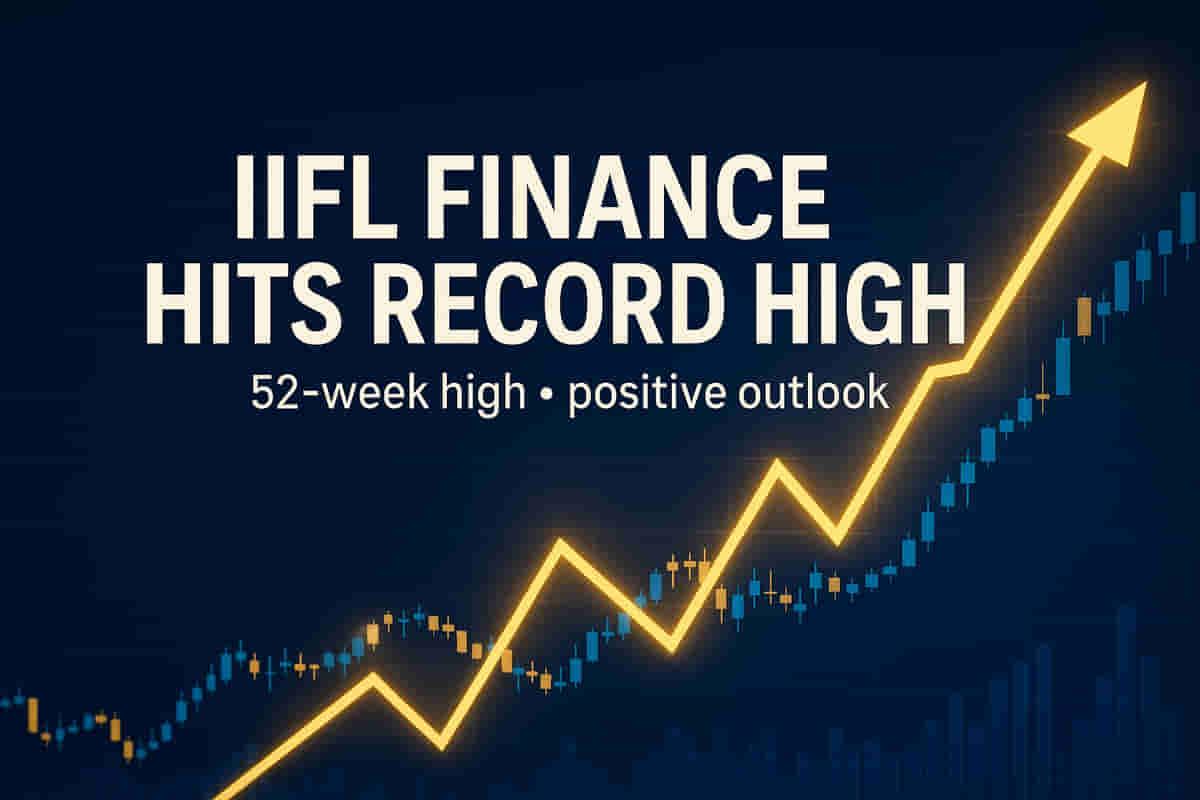IIFL Finance Stock Surges to 52-Week High on Positive Fitch Ratings Outlook
Banking/Finance
|
30th October 2025, 9:40 AM

▶
Stocks Mentioned :
Short Description :
Detailed Coverage :
IIFL Finance's stock price hit a 52-week high of ₹549.35, marking a 5% increase on Thursday's intra-day trade on the BSE, driven by substantial trading volumes. The stock has seen a significant 31% rally since late September. On October 16, 2025, Fitch Ratings upgraded IIFL Finance's Long-Term Issuer Default Rating (IDR) outlook from 'Stable' to 'Positive'. Fitch cited expectations of potential improvements in IIFL's credit profile, including its business and risk profiles, asset quality, and funding diversity over the next two years. Loan growth has picked up following the removal of regulatory restrictions on IIFL's gold-backed lending business in September 2024. The rating revision also reflects Fitch's expectation of a gradual decline in legacy problematic assets and stabilization of asset quality risks as IIFL pivots its portfolio towards secured lending categories. Fitch noted that India's strong medium-term economic growth potential will continue to support NBFIs. Fitch anticipates continued asset under management (AUM) growth with a focus on secured business lines. Profitability is expected to recover over the next 1-2 years through loan volume recovery, yield expansion, and moderation in credit costs.
Impact: This news is highly positive for IIFL Finance, likely boosting investor confidence and potentially leading to further stock price appreciation. The improved outlook could also facilitate better access to funding and potentially lower borrowing costs. For the broader NBFC sector in India, it signals positive sentiment and confirms the sector's growth prospects, supported by favorable economic conditions and regulatory measures. Impact Rating: 8/10
Difficult Terms: 52-week high: The highest price at which a stock has traded during the past 52 weeks (one year). NBFC: Non-Banking Financial Company. These are financial institutions that provide banking-like services but do not hold a banking license. Intra-day trade: Buying and selling of a financial instrument within the same trading day. Heavy volumes: A large number of shares being traded, indicating significant investor interest. Long-Term Issuer Default Rating (IDR): A rating that assesses the likelihood of an entity defaulting on its long-term debt obligations. Outlook: An indication by a rating agency of the likely direction of a rating in the medium term (e.g., positive, negative, or stable). Credit profile: An assessment of a borrower's creditworthiness, including its ability to repay debt. Asset quality: The quality of a company's loans and other assets, indicating the risk of default or loss. Funding diversity: Having multiple sources of funding, reducing reliance on any single source. Disbursements: The act of paying out money, such as loan funds. Legacy problem assets: Loans or investments from the past that have become non-performing or are at high risk of default. Pivots the portfolio: Shifting the company's investments or lending focus towards different types of assets or businesses. Secured lending: Loans backed by collateral, such as property or gold. NBFIs: Non-Banking Financial Institutions, same as NBFCs. Asset Under Management (AUM): The total market value of all financial assets managed by an investment company or a financial institution. Net interest margin: The difference between the interest income generated by a financial institution and the interest it pays out to its lenders. Credit costs: The cost incurred by a financial institution due to loan defaults or non-performing assets.